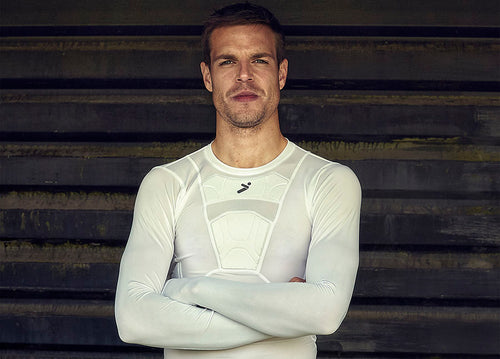The pregame taping ritual adds much-needed support to some of the joints most susceptible to injury as a goalkeeper. Methods vary and results aren’t always successful, so we consulted All-Star Stefan Frei on his technique.
Here’s our step-by-step guide on finger taping techniques so you can tape like a pro:
How you tape your fingers
Goalkeepers are no stranger to finger injuries. Stef Frei knows, “...they’re just part of the game. I think I’ve dislocated or broken pretty much every finger and it’s not fun.” FIFA states that “the risk of injury is never very far away from the man in the number 1 jersey.” So what can we, as goalkeepers, do to help keep us out of the infirmary and on the pitch?

Like the use of finger spines in gloves, finger taping adds stability and lessens your risk of finger injury. On our last visit to Seattle Sounder training facility, Starfire, Stef showed us how he tapes his before big games. “A few years back I did some research online and I found some good videos of UFC fighters on how they tape their fingers…I was able to find some valuable insight...”.
Using Stef’s taping routine and some influences from Jiu Jitsu, here is our recommended finger taping technique.

1. Use a roll of 1/2” thick medical or athletic tape, start by making one full wrap around the base of your finger.



4. Move the tape diagonally back towards the base, creating an X intersecting at the middle joint.

5. Complete one more wrap at the base, and cut excess tape if needed.
As a keeper, it’s important to protect your fingers, but equally important to keep your range of motion. With this technique “....I could bend my fingers in the ways I needed them to and not ways that would cause injury.”
How to wrap your wrist
While most gloves have evolved with thicker wrist straps, they often don’t give the full support needed by competitive keepers. When done correctly, wrist wrapping can be a great way to supplement this support. Frei also offered his methods on this ritual:

1. Use a 2” wide roll of medical or athletic tape, start by placing the edge of the tape on your wrist. The end of the tape should be just above where your wrist bends.

2. Make two to three full wraps around your wrist and cut the tape.

3. For added support, repeat with one wrap going between the thumb and index finger. Finish with an additional wrap around the wrist (Optional).
Take it from Stef, “it is about doing everything we can to minimize any injuries and my taping technique has helped provide a little more protection.” This ritual was the inspiration behind our Legend Glove’s double-length wrist strap.
That’s a wrap.
Co-Authored by Stef Frei & Sebastian Head.























